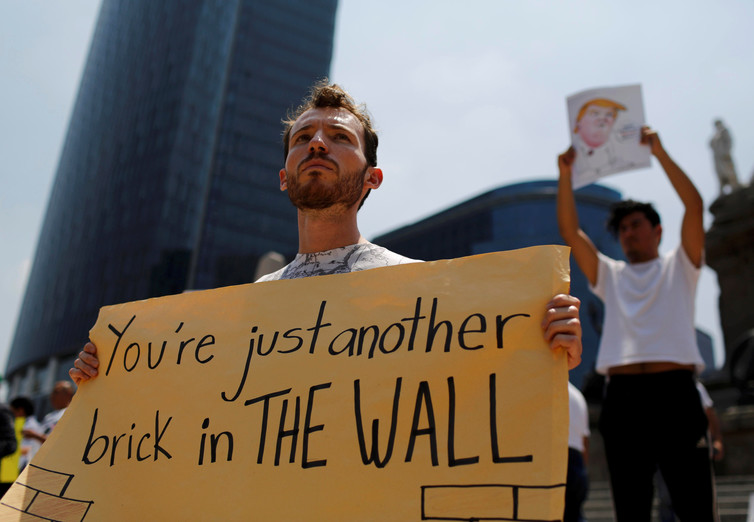Mexican political analyst Carlos Bravo Regidor, from the Center of Research and Economic Tuition (Centro de Investigación y Docencia Económica), traces a projection of what he believes will be the way Mexico will deal with the incoming administration of Donald Trump.
What is Mexico’s plan for facing incoming US president Donald Trump, whose presidential campaign included heated anti-Mexican rhetoric? How is the country’s government preparing for threatened changes to the US-Mexico relationship in terms of policy, immigration and trade?
If they’re any insight into Mexican President Enrique Peña Nieto’s strategy for the coming years, two key decisions in this realm have been disconcerting to say the least.
Rolling out the red carpet
The first, in August, was to invite then-candidate Donald Trump to Mexico, responding to his hostility with conciliatory gestures and goodwill.
The results were not good. Rather than moderating his views, Trump jumped on the occasion to imply that the Mexican president actually supported his positions. After the meeting with Peña Nieto, in a speech made later that night in Phoenix, Arizona, Trump told supporters:
I’ve just landed having returned from a very important and special meeting with the president of Mexico, a man I like and respect very much. […] We will build a great wall along the southern border. And Mexico will pay for the wall. One hundred percent. They don’t know it yet, but they’re going to pay for it. And they’re great people and great leaders but they’re going to pay for the wall. We will use the best technology, including above and below ground sensors that’s the tunnels….Towers, aerial surveillance and manpower to supplement the wall, find and dislocate tunnels and keep out criminal cartels and Mexico you know that, will work with us. I really believe it. Mexico will work with us.
This episode did not play out well in Mexico. According to the Reforma newspaper, 81% of Mexicans disagreed with Trump’s visit. The daily El Universal found that 74% of citizens felt offended that the government had invited him to Mexico.
The stunt also ended badly for its mastermind, Luis Videgaray, a scandal-tainted confidante of president Peña Nieto since his days as governor of the State of Mexico (2005-2011); he was forced to resign his post as Secretary of Treasury.
The Mexican government’s second move to prepare for Trump, just a few days ago, was to sack Secretary of Foreign Relations Claudia Claudia Ruíz Massieu. Mexico’s top diplomat for only 16 months, she had recently shown herself reluctant to work with Trump. So, on the eve of the inauguration, Peña Nieto decided to put in her place none other than Luis Videgaray.

Given the new secretary’s admitted lack of international diplomacy experience, the press has speculated that his alleged relationship with Jared Kushner, Trump’s son-in-law, is his main “qualification” for the job. Some commentators are also suggesting that this high-profile appointment reveals Videgaray as Peña Nieto’s preferred Revolutionary Institutional Party successor for the presidency in 2018.
Why not play a two-level game?
So what’s going on here? And what does it mean for Mexico, just days away from four years of President Donald Trump?
To start with, it shows that the Mexican government does not, for whatever reason, find it necessary to correct its course or to recruit new personnel in order to regain some of the credibility it has lost both nationally and internationally.
In this delicate moment, when Mexico will require the talent and experience of the best men and women its foreign service has to offer, the president’s most recent appointment leaves no doubt: Luis Videgaray is Mexico’s response to Donald Trump. The man is the policy.
Click here to read full article on The Conversation
Source: http://theconversation.com/

